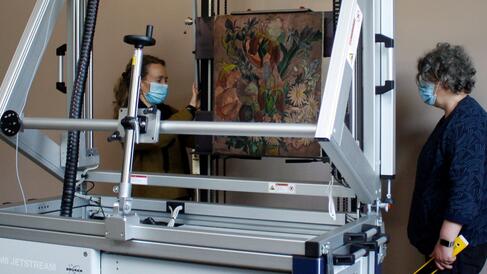CHERISH infrastructure update - June 2021

We are delighted to announce that, bar a few finishing touches, we have completed the large-scale refurbishment and upgrade of our facilities, following the award of a large AHRC Capability for Collection grant to the CHERISH Initiative. We have renovated our laboratories and collection study rooms to provide larger and cleaner spaces, controlled environments, modern sample preparation facilities and increased capacity. Furthermore, our analytical equipment has been upgraded to include a wide range of state-of-the art instruments. Some highlights include:
- the conversion of an elderly and unused photographic darkroom at MAA into a specialist imaging studio, equipped with state-of-the-art imaging and digitisation equipment
- the acquisition of Rigaku CT Lab HX high-performance X-ray micro computed tomography scanner (µCT) at the Department of Archaeology, which will enable the 3D non-invasive examination of the inner structure of materials ranging from skeletal remains to works of art
- the refurbishment of the HKI's largest conservation studio, where just this week we are overseeing the installation of a large-scale motorised scanning easel. Combined with a new infrared camera system, this will enable high-resolution imaging of large paintings, up to several metres across, to detect technical features below the surface, areas of damage or restoration, and to assist in the identification of the materials used by the artists
- the purchase of four portable items of imaging and spectroscopic equipment, which complement the Fitzwilliam Museum's existing analytical capability and complete our 'mobile lab', ensuring we can undertake in-depth, non-invasive analyses of collections all around Cambridge and far beyond
- the installation of a large-scale multispectral imaging system at Cambridge University Library, which will significantly enhance the Digital Content Unit's capability to provide high-quality technical imaging service to the thousands of researchers who visit the library's collections study spaces each year.
